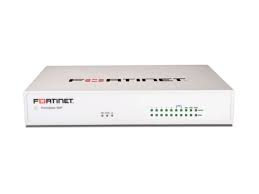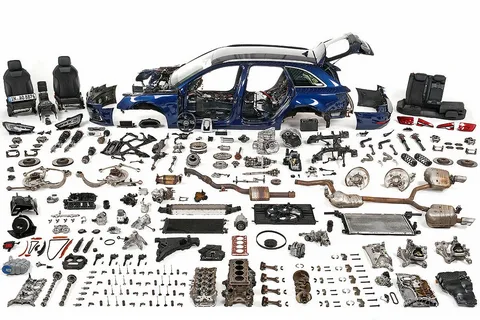The Holden TK Barina is a popular choice for many drivers looking for a reliable and efficient vehicle. The alternator is one of the key components that keep your Barina running smoothly. The Holden TK Barina alternator is responsible for charging the car battery and powering the electrical systems while the engine runs. However, like any automotive component, it can encounter issues over time. This blog post will provide tips for troubleshooting your Holden Barina alternator, helping you diagnose potential problems and keep your car in optimal condition.
Understanding the Role of the Alternator Holden Cruze
The alternator is crucial to your Holden TK Barina’s electrical system. Its primary role is to convert mechanical energy from the engine into electrical energy. This process is vital because it ensures that the battery remains charged and that all the electrical systems in the vehicle, such as the headlights, radio, and power windows, receive a consistent and adequate power supply.
When the engine runs, the alternator generates electricity by spinning a rotor within a coil of wire, creating an alternating current (AC). This AC is then converted into direct current (DC) through a rectifier suitable for powering the car’s electrical components and charging the battery. Without a properly functioning alternator, your car’s battery would quickly deplete, leaving you with an inoperable vehicle.
Additionally, the Alternator Holden Cruze regulates the voltage. Modern alternators are equipped with voltage regulators that ensure a steady voltage level, protecting the car’s electrical systems from damage due to fluctuations. This regulation is essential because too much voltage can harm sensitive electronics, while too little can result in an insufficient power supply, causing the battery to discharge.
The alternator’s efficiency and performance are also affected by its drive belt, commonly known as the serpentine belt. This belt connects the alternator to the engine’s crankshaft, allowing it to spin and generate electricity. A worn or damaged belt can compromise the alternator’s functionality, leading to electrical issues.
Understanding the critical functions of the Holden alternator underscores its importance in your vehicle’s overall performance. Recognising and addressing issues early can prevent more severe problems and ensure your car remains reliable and efficient.
Common Symptoms of a Failing Holden Alternator
The alternator is a critical component in your Holden vehicle. It is responsible for charging the battery and powering electrical systems while the engine is running. A failing alternator can lead to problems, potentially leaving you stranded if not addressed promptly. Below are some common symptoms to watch out for.
1. Dim or Flickering Lights
One of the first signs of a failing alternator is dimming or flickering headlights and dashboard lights. The alternator may not provide enough power to fully illuminate the lights, especially at night or when using other electrical systems.
2. Battery Warning Light
A common symptom is the illumination of the battery warning light on the dashboard. This light typically indicates an issue with the charging system, often pointing to a malfunctioning alternator.
3. Weak or Dead Battery
If your battery frequently dies or has trouble holding a charge, the alternator might be the culprit. While batteries do wear out over time, a failing alternator can cause a battery to drain faster than usual.
4. Strange Noises
A failing alternator can produce unusual noises, such as grinding or whining. These sounds may result from a misaligned pulley or worn-out bearings within the alternator.
5. Electrical Issues
Finally, if you notice problems with electrical components, such as the radio cutting out, power windows operating slowly, or other systems malfunctioning, the alternator might not supply enough power to run these systems effectively.
Diagnosing the Holden Cruze Alternator issues
Diagnosing issues with your Holden alternator begins with careful observation of symptoms and a systematic approach to testing. Before diving into complex diagnostics, perform a quick visual inspection. Check for any signs of damage, such as frayed wires, loose connections, or a visibly worn serpentine belt.
Next, examine the battery. Often, alternator problems are mistaken for battery issues. Ensure the battery is fully charged and the terminals are clean and securely connected. The alternator may be the culprit if the battery is in good condition but still discharging.
Another preliminary check involves listening for unusual noises from the Holden Cruze Alternator. Grinding, whining, or squealing sounds can indicate bearing failure or a slipping belt. These noises often precede more noticeable electrical failures and can provide an early warning of alternator issues.
You can perform a voltage test using a multimeter for a more in-depth diagnosis. As detailed in the “Testing the Alternator with a Multimeter” section, this test helps determine if the alternator produces the correct voltage. Additionally, you can perform a load test by turning on multiple electrical systems to see if the alternator maintains a stable voltage.
If these tests indicate that the alternator is underperforming, consider testing the voltage regulator, which can sometimes fail independently of the alternator. You might also want to inspect the alternator’s grounding connections, as poor grounding can mimic alternator failure symptoms.
These diagnostic steps will help you pinpoint whether the issue lies with the alternator itself or another part of your vehicle’s electrical system, ensuring that you take the correct steps toward a fix.
Testing the Alternator with a Multimeter
To test the alternator of your Holden TK Barina with a multimeter, follow these steps:
Set the multimeter to the DC voltage setting.
Start the engine and let it idle.
Connect the multimeter to the battery terminals (positive to positive and negative to negative).
Check the voltage reading.
A healthy alternator should provide a voltage reading between 13.7 and 14.7 volts. If the reading is lower, the alternator may not charge the battery correctly.
Next, a load test will be performed to further assess the alternator’s performance. With the engine running, turn on high-demand electrical devices like the headlights, air conditioning, and radio. Observe the multimeter reading during this load condition. The voltage should remain stable and within the 13.7 to 14.7 volts range. If there is a significant voltage drop, it indicates the alternator is failing to supply adequate power under load.
Test the alternator’s output at the alternator terminal to confirm the reading you obtained at the battery terminals. This step ensures no voltage drops due to poor connections or wiring issues.
Lastly, if your alternator has an external voltage regulator, you might need to test this component separately to rule out regulator failure. Disconnect the voltage regulator and check its functionality according to the manufacturer’s instructions, ensuring it maintains the correct voltage levels.
Using these methods will give you a comprehensive understanding of your Holden alternator’s health, allowing you to diagnose potential issues accurately.
Replacing the Alternator
If you’ve determined that your Holden Barina alternator needs to be replaced, it’s a task you can tackle with some mechanical know-how. Here’s a general outline of the steps involved:
Safety First:
Always disconnect the negative terminal of the battery to prevent any electrical shorts.
Remove the Serpentine Belt:
Depending on your engine configuration, you may need to relieve tension on the serpentine belt to remove it from the alternator.
Unbolt the Alternator:
Disconnect the electrical connectors and remove the bolts securing the alternator to the engine.
Install the New Alternator:
Position the new alternator, securing it with bolts and reconnecting electrical connectors.
Reinstall the Serpentine Belt:
Ensure the belt is properly aligned on all pulleys and has the correct tension.
Reconnect the Battery:
Reattach the negative terminal and start the engine to check if the new alternator is functioning correctly.
Replacing the alternator may seem daunting, but it can be a manageable DIY project with a little patience and the right tools.
Maintaining the TK Barina Alternator
Maintaining your Barina alternator involves several key steps to ensure it functions efficiently. Start by regularly inspecting the alternator for visible wear and tear, such as frayed wires or loose connections. If not addressed promptly, these small issues can escalate into larger problems.
Keeping the alternator clean is also crucial. Dirt and debris can accumulate over time and impede its performance. Use a damp cloth to gently wipe down the exterior, avoiding direct water exposure to sensitive components.
Pay close attention to the serpentine belt that drives the TK Barina Alternator. Inspect it for cracks, fraying, or any signs of deterioration. A damaged belt can affect the alternator’s ability to generate electricity, leading to electrical issues in your vehicle. Replace the belt if it shows any signs of wear to prevent it from slipping or breaking.
Battery maintenance plays a significant role in the alternator’s performance. A healthy battery ensures that the alternator isn’t overworked. Regularly check the battery terminals for corrosion and ensure they are securely connected. Clean any corrosion with baking soda and water to maintain a strong electrical connection.
Lastly, stay vigilant about your car’s electrical systems. Investigate promptly if you notice any irregularities, such as flickering lights or slow power windows. These could be early indicators of alternator issues, and addressing them early can prevent more severe problems.
Adhering to these maintenance practices can significantly enhance the lifespan and performance of your alternator, ensuring reliable vehicle operation.
Conclusion
By familiarising yourself with the alternator’s essential functions and recognising the warning signs of potential failure, you can address issues before they escalate. Start with basic visual inspections, listen for unusual sounds, and utilise a multimeter to check voltage levels. These steps can help you pinpoint the root cause of any problems, whether they stem from the alternator, voltage regulator, or related components. If your Holden TK Barina alternator is the source of trouble, replacing it can be a feasible DIY project with the right tools and patience.
FAQS
Q1: How can I tell if my Holden alternator is failing?
A: Common symptoms of a failing alternator include dimming or flickering lights, the battery warning light illuminating your dashboard, malfunctions in electrical components such as power windows and the radio, unusual noises like grinding or whining, and difficulty starting the engine.
Q2: What tools do I need to test my Holden TK Barina alternator?
A: You will need a multimeter to test your Holden TK Barina alternator. This device allows you to measure the alternator’s voltage output and check if it falls within the healthy range of 13.7 to 14.7 volts. Additional tools might include wrenches and screwdrivers to access the alternator and battery terminals.
Q3: Can I replace the alternator or need a professional?
A: Replacing the alternator is a task you can undertake if you have some mechanical know-how and the right tools. Follow the general steps: disconnect the battery, remove the serpentine belt, unbolt the old alternator, install the new one, and reconnect everything. However, it’s best to consult a professional mechanic if you’re unsure or uncomfortable.
Q4: How often should I check my alternator?
A: It’s good practice to visually inspect your alternator during regular vehicle maintenance, such as oil changes. Pay attention to signs of wear, such as frayed wires or a worn serpentine belt. Also, monitor the performance of your vehicle’s electrical systems for any irregularities.
Q5: What’s the difference between an alternator and a battery issue?
A: An alternator issue often presents symptoms like dimming lights, electrical failures, and strange noises while the engine runs. In contrast, a battery issue is more likely to cause problems starting the car or maintaining a charge. Testing both components can help determine the root cause of the problem.
| Related Business Listings |
| Contact Directory |
| Local Business Profiles |




